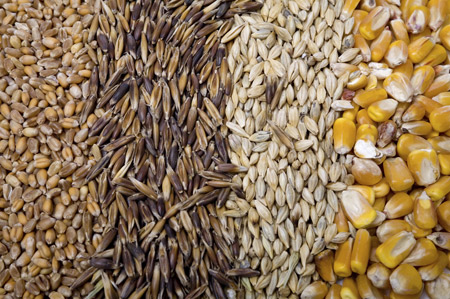USDA Report Kicks the Can Down the Road
Category: Grains

(AgWeb) – The amount of uncertainty surrounding this year’s corn and soybean crops was reflected in today’s round of USDA reports. In its monthly Crop Production and World Agricultural Supply and Demand Estimates (WASDE) reports, USDA made few revisions, acknowledging more information will be shared in next month.
“The report was neutral,” says Joe Vaclavik, founder and president of Standard Grain. “The USDA kind of just kick the can down the road and the number of respects.”
This month, USDA’s National Agricultural Statistics Service (NASS) will collect updated information on 2019 acres planted, and if the newly collected data justify any changes, NASS will publish updated acreage estimates in the August Crop Production report.
For corn, USDA kept the national average corn yield at 166.0 bu. per acre. The season-average corn price received by producers is lowered 10 cents to $3.70 per bu.
“USDA left the corn yield number unchanged versus last month, and they used the June 28 Acreage number, which a lot of people—including USDA—believed to be wrong,” Vaclavik says. “They use the June numbers until they know more, and they will not know more until that August report. So, this is kind of a placeholder until then.”
The corn outlook calls for larger production and beginning stocks, greater feed and residual use, lower food, seed, and industrial (FSI) use and increased ending stocks.
For soybeans, USDA did lower the national average yield to 48.5 bu. per acre—down 1 bu. based on delayed planting progress. The 2019/20 season-average price for soybeans is forecast at $8.40 per bu., up 15 cents from last month.
This month’s U.S. soybean supply and use projections for 2019/20 include lower beginning stocks, production, exports and ending stocks.
Vaclavik says the downward revision in corn demand wasn’t surprising, but some cuts were larger than the trade expected. The demand cuts reflected the last few month’s higher corn prices.
“You’ve got a corn prices that are really $1 better than it would have been had this weather event never happened,” he says. “What sort of impact will these prices have on demand in six months, 10 months or a year out? We really don’t know.”
Markets Look Forward
With this round of USDA reports behind us, Vaclavik says the market will key in on two key factors.
“We’re still very much in weather market,” he says. “Weather during the next couple months combined with an August report, those are going to be your two big focuses.”
Most years, Vaclavik says, the weather is easier for the market and trade to analyze.
“You can look at a weather forecast in July and say if it will be a bullish or bearish forecast,” he says. “This year because of the variability both in terms of crop maturity and crop conditions makes it is very, very difficult for traders or anybody to look at a weather forecast or pattern and say this is bullish or bearish.”
Don’t expect the markets to become flippant about the weather forecast.
“We’re still very much in the process of price discovery, and we’re trying to figure out what the production numbers are going to be, while at the same time trying to figure out what the implications will be on the demand side with these higher prices,” he says.
Stay focused on your marketing plan, Vaclavik suggests.
“I understand that a lot of farmers are probably friendly or bullish the market right now because they understand that that we’re in for a light crop,” he says. “Just because the crop is like doesn’t necessarily mean that prices will go higher. You don’t want to totally abandon a marketing plan. These are prices that we had hoped and wished for every year for the last five or six years—here they are in corn.”
The best way to be bullish in this market, he says, is to own put options. “Buy your insurance, protect the downside, leave the upside totally open, and have a lot of flexibility.”
Also, be ready for volatility. “We’re still in a higher volatility environment, and that’s going to continue to we know more,” he says.




